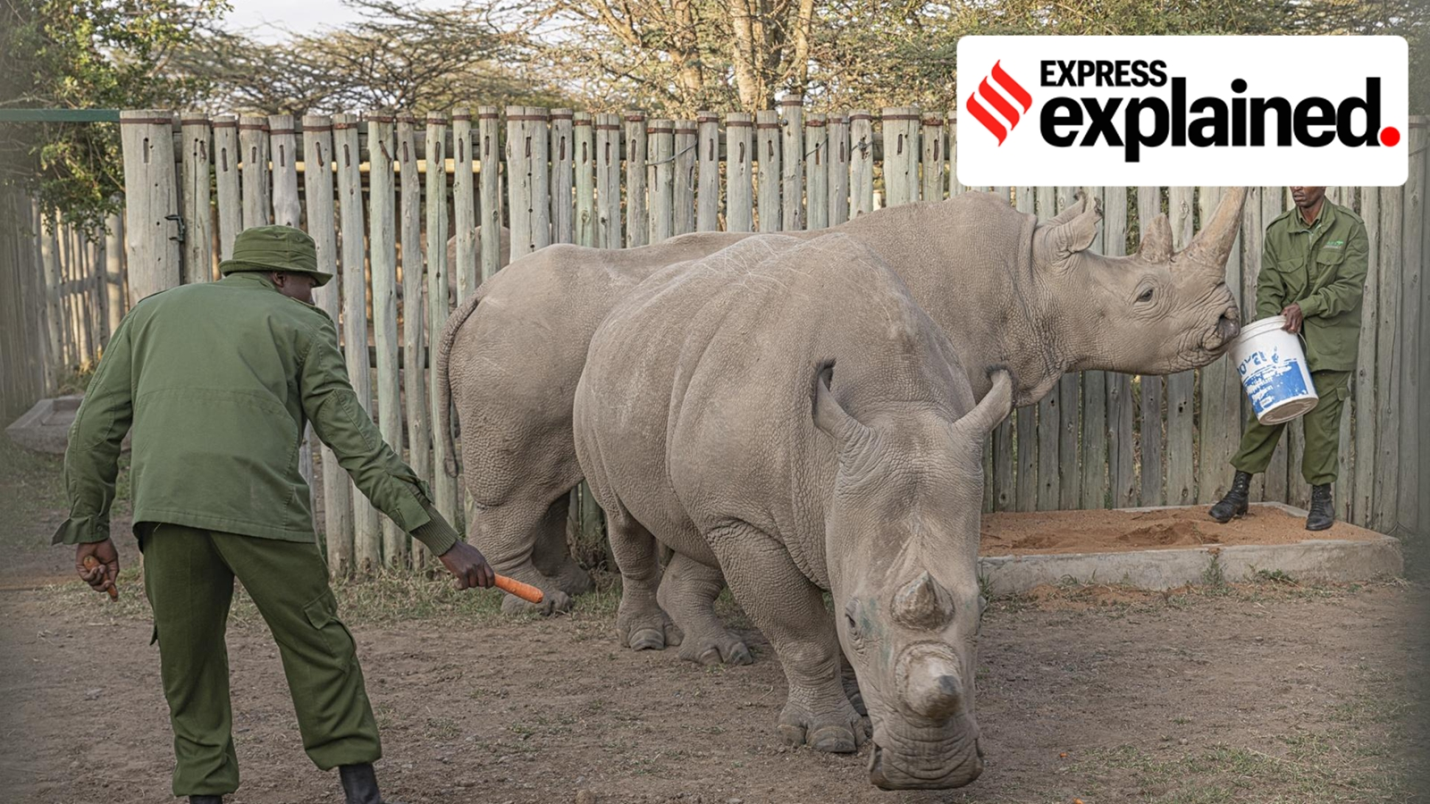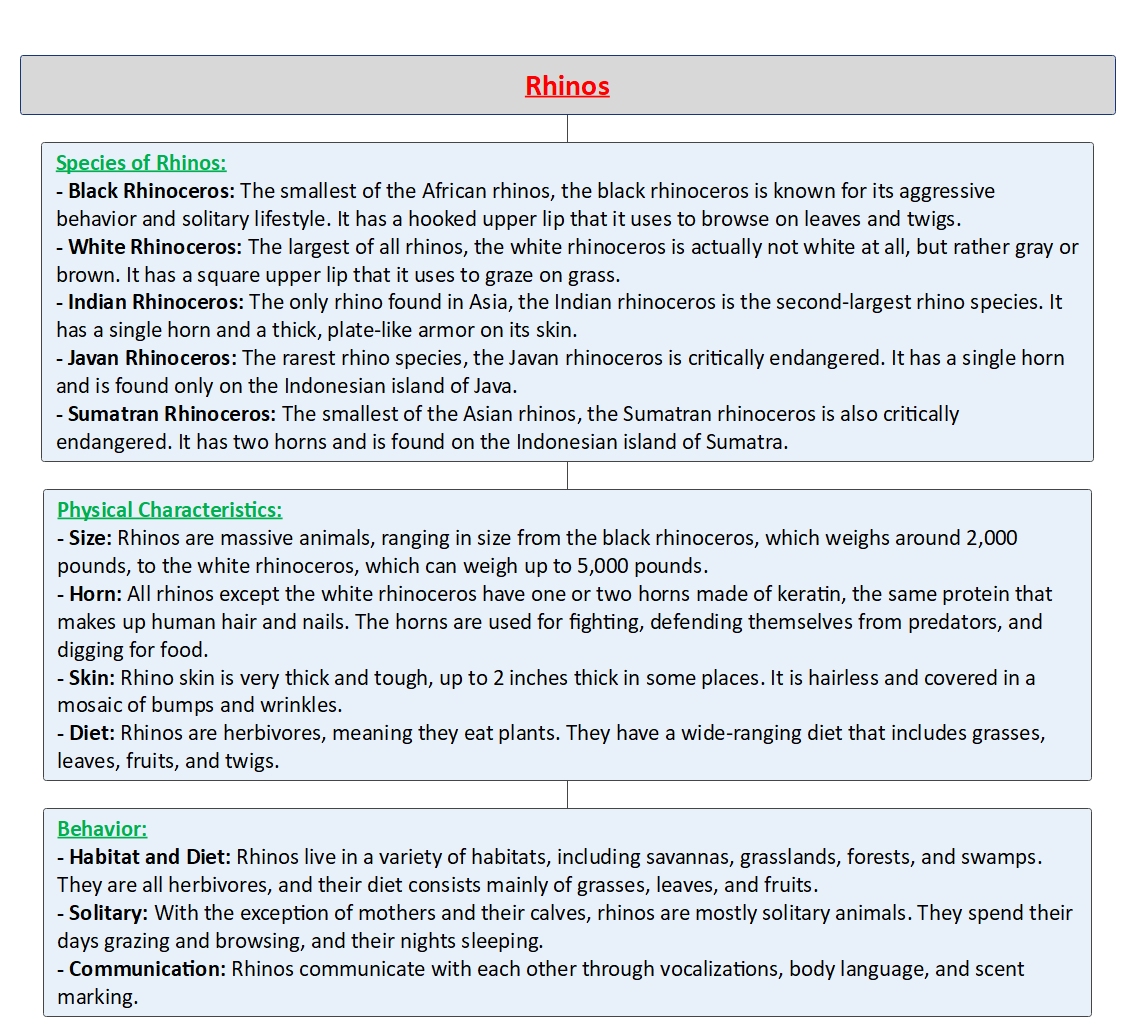Free Courses Sale ends Soon, Get It Now


Free Courses Sale ends Soon, Get It Now



Copyright infringement not intended
Picture Courtesy: indianexpress.com
Context: The BioRescue project aims to rebuild the critically endangered northern white rhinoceros subspecies through in vitro fertilization (IVF) and surrogacy.
Details
|
IUCN Status of Rhino ●Black Rhinoceros: Critically Endangered (CR) - Despite slow population increases due to conservation efforts, poaching remains a major threat. ●White Rhinoceros: Near Threatened (NT) - Two subspecies, Southern White and Northern White, have different statuses. Southern White is nearly threatened due to ongoing conservation success, while the Northern White is Critically Endangered (CR) with only two females remaining alive. ●Greater One-Horned Rhinoceros: Vulnerable (VU) - While populations have increased in recent years, habitat loss and poaching remain concerns. ●Sumatran Rhinoceros: Critically Endangered (CR) - The rarest rhino species, facing severe threats from habitat loss and poaching. ●Javan Rhinoceros: Critically Endangered (CR) - The most critically endangered rhino species, with only about 70 individuals remaining due to habitat loss and poaching. |
The BioRescue project
The first rhino pregnancy achieved through IVF

Must Read Articles:
RHINO: https://www.iasgyan.in/daily-current-affairs/rhino-48#:~:text=The%20Indian%20rhinoceros%20
|
PRACTICE QUESTION Q. Consider the following statements in the context of the Rhinoceroses: 1. They are herbivorous mammals that are native to Africa and Asia. 2. They are the second-largest land mammals after elephants. 3. White rhinoceros is the largest of the five species of rhinoceros. 4. Rhino skin is folded into plate-like sections, which help to protect the rhino from predators. 5. Their legs are short and powerful, allowing them to run surprisingly fast for their size. 6. They live in a variety of habitats, including grasslands, savannas, forests, and wetlands. 7. They are good swimmers. How many of the above statements are correct? A) Only four B) Only five C) Only six D) All seven Answer: D Explanation: All seven statements are correct. Here is an explanation for each statement: 1. Rhinos are herbivores, meaning they only eat plants. They are also native to Africa and Asia, where all five species of rhinoceros can be found. 2. Elephants are the largest land mammals, and rhinos are the second-largest. The white rhinoceros is the largest species of rhinoceros, weighing in at up to 5,000 pounds. 3. The white rhinoceros is the biggest of the five rhino species, followed by the Indian rhinoceros, the black rhinoceros, the Sumatran rhinoceros, and the Javan rhinoceros. 4. Rhino skin is very thick, up to 2 inches thick in some places. It is folded into plate-like sections, which help to protect the rhino from predators and the harsh African sun. The thick skin also helps to insulate the rhino from extreme temperatures. 5. Despite their short legs, rhinos can run surprisingly fast, up to 30 miles per hour for short bursts. Their powerful legs allow them to run quickly and charge at predators. 6. Rhinos can be found in a variety of habitats, including grasslands, savannas, forests, and wetlands. The type of habitat that a rhino lives in depends on the species. For example, black rhinos prefer dense forests, while white rhinos prefer open grasslands. 7. Rhinos are good swimmers and can stay underwater for up to five minutes. They use their powerful legs to paddle and their horns to steer. Swimming is an important way for rhinos to cool off, to escape predators, and to travel between different parts of their habitat. |
© 2024 iasgyan. All right reserved